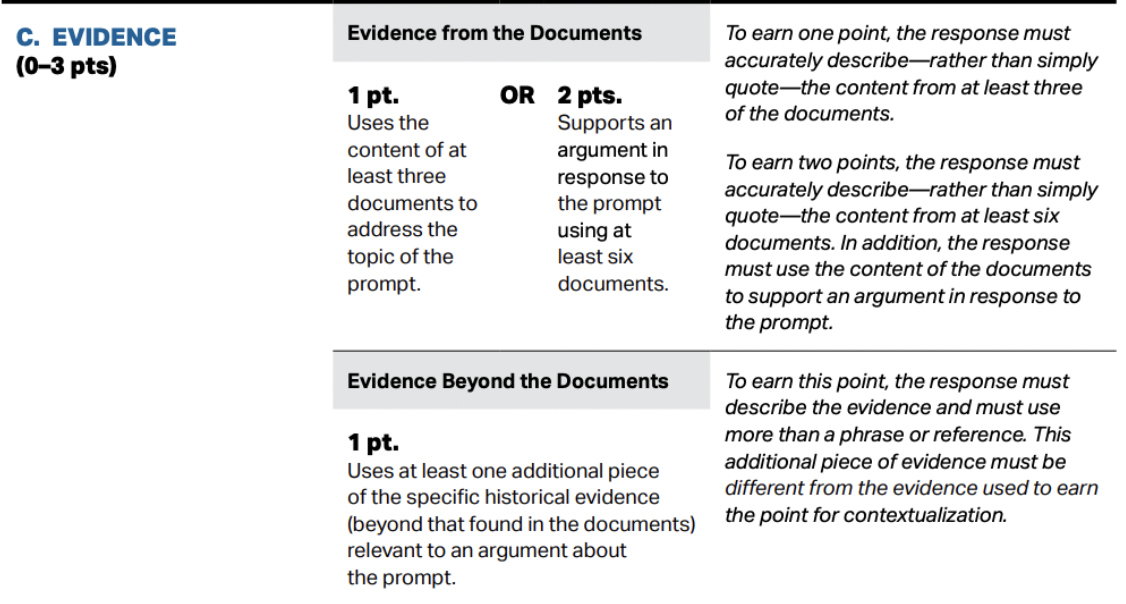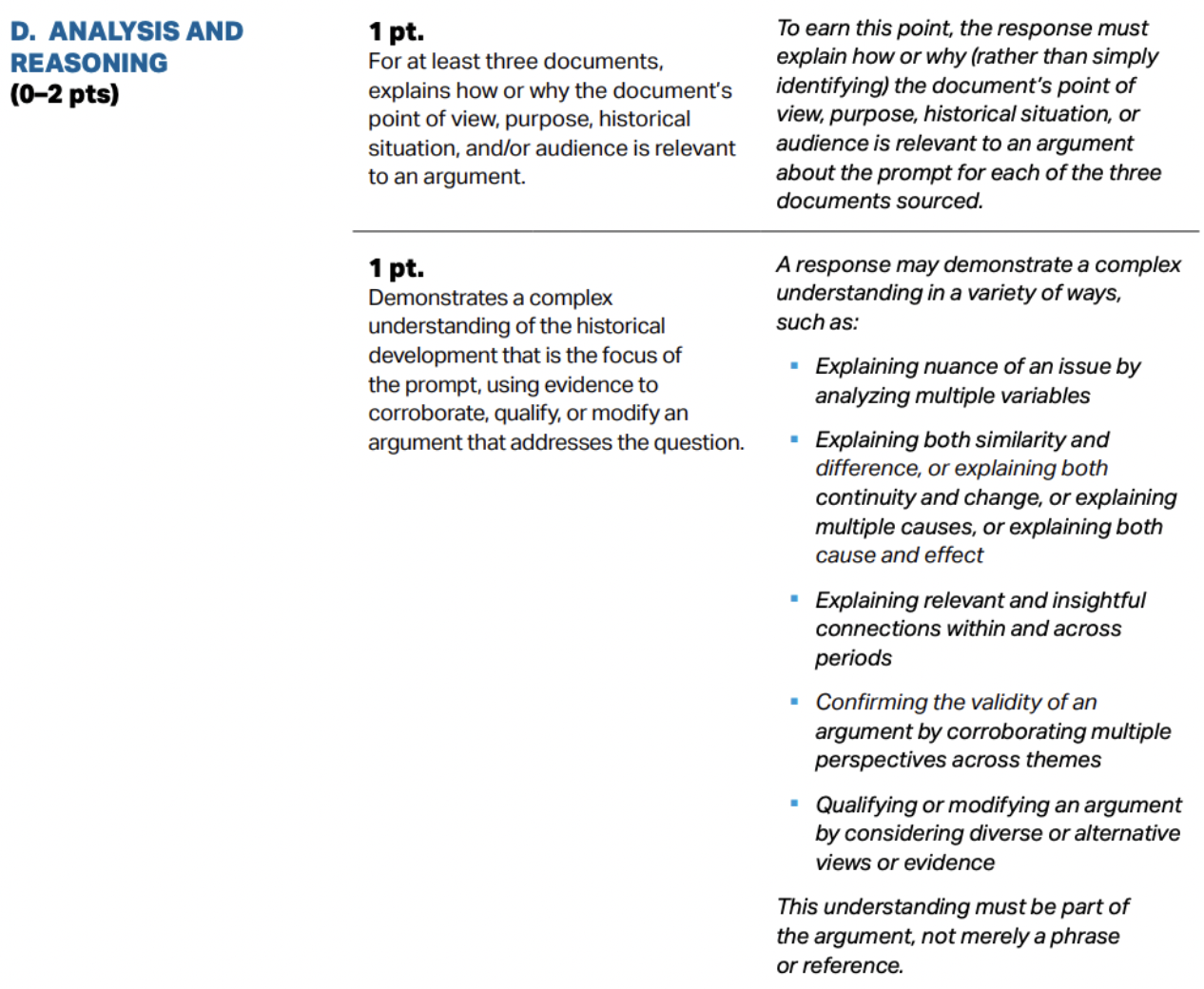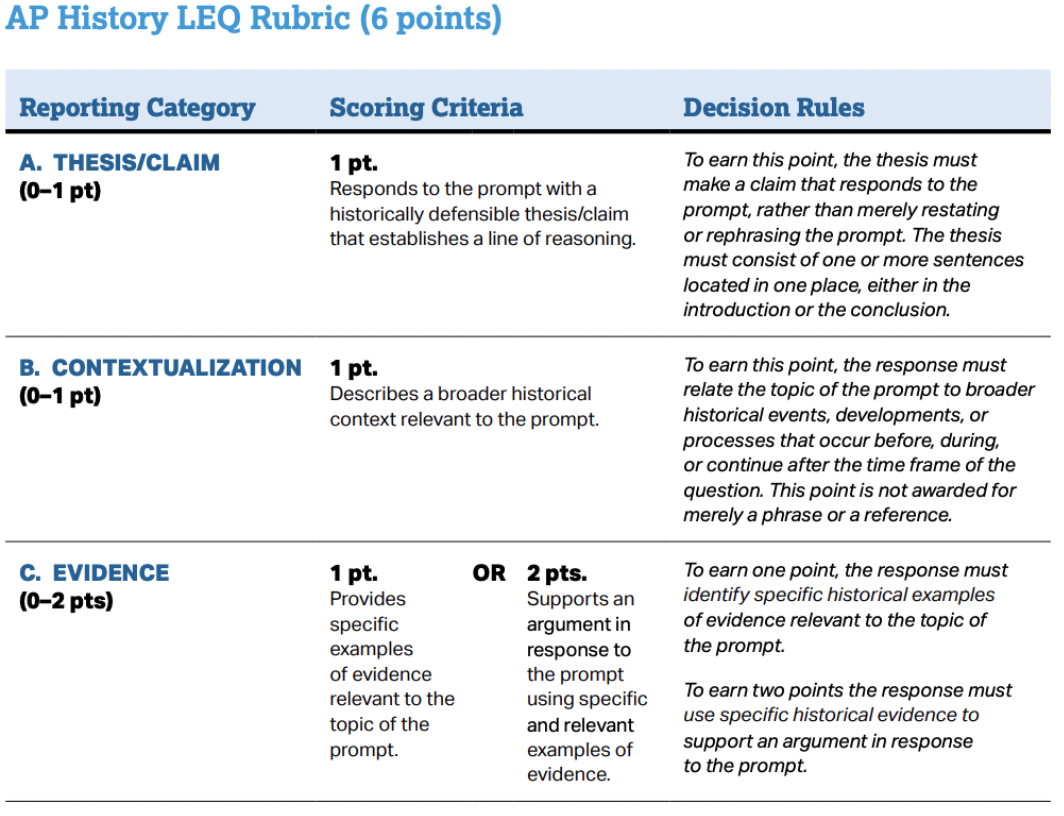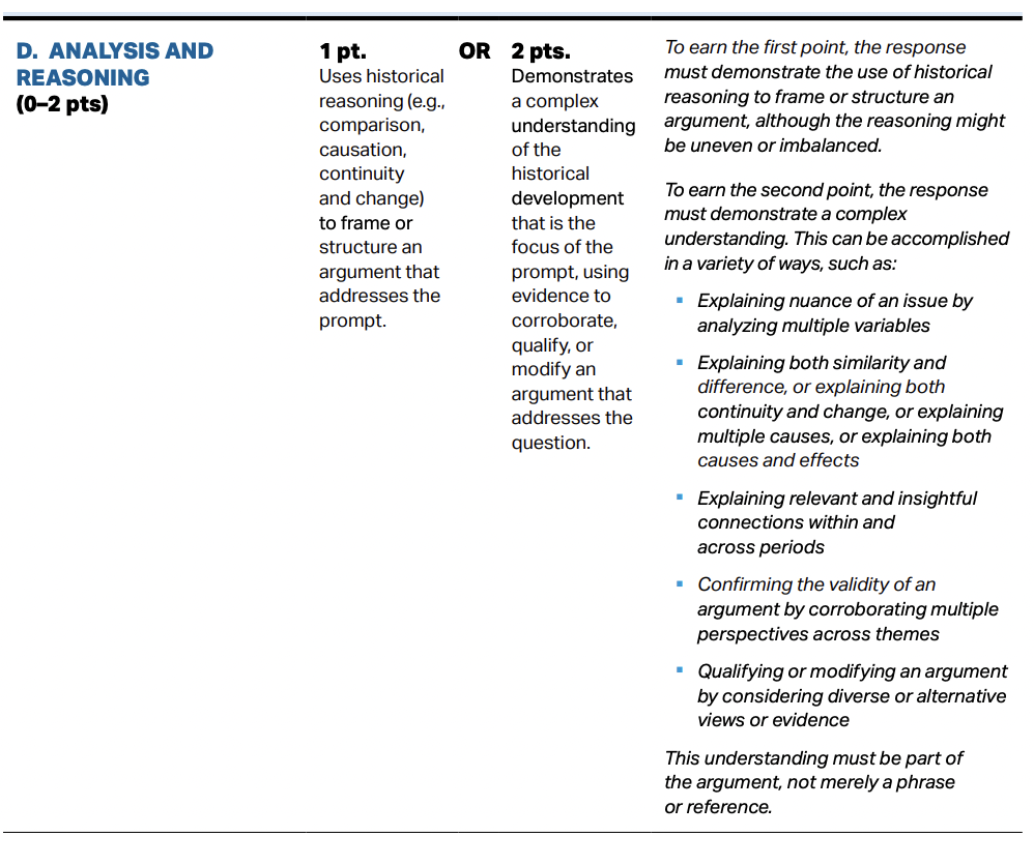A Q
AP US History 🇺🇸
454 resourcesSee Units
Your Guide to the 2024 AP US History Exam
We know that studying for your AP exams can be stressful, but Fiveable has your back! We created a study plan to help you crush your AP US History exam. This guide will continue to update with information about the 2024 exams, as well as helpful resources to help you do your best on test day. Unlock Cram Mode for access to our cram events—students who have successfully passed their AP exams will answer your questions and guide your last-minute studying LIVE! And don't miss out on unlimited access to our database of thousands of practice questions.
Format of the 2024 AP US History Exam
Going into test day, this is the exam format to expect:
- Multiple Choice Section - 40% of your score
- 55 questions in 55 minutes
- Short Answer Section - 20% of your score
- 3 questions in 40 minutes
- Free-Response Section - 40% of your score
- 2 questions in 1 hour and 40 minutes
- Document-Based Question | 1 hour | 25% of your score
- Long Essay | 40 minutes | 15% of your score
Scoring Rubric for the 2024 AP US History exam





Check out our study plan below to find resources and tools to prepare for your AP US History exam.
When is the 2024 AP US History Exam and How Do I Take It?
The exam will be in-person and on paper at your school on Friday, May 10, 2024, at 8:00 AM your local time.
You will have 3 hours and 15 minutes to take the exam.
How Should I Prepare for the APUSH Exam?
- First, download the AP United States History Cheatsheet PDF - a single sheet that covers everything you need to know at a high level. Take note of your strengths and weaknesses!
- We've put together the study plan found below to help you study between now and May. This will cover all of the units and essay types to prepare you for your exam. Pay special attention to the units that you need the most improvement in.
- Study, practice, and review for test day with other students during our live cram sessions via Cram Mode. Cram live streams will teach, review, and practice important topics from AP courses, college admission tests, and college admission topics. These streams are hosted by experienced students who know what you need to succeed.
Pre-Work: Set Up Your Study Environment
Before you begin studying, take some time to get organized.
🖥 Create a study space.
Make sure you have a designated place at home to study. Somewhere you can keep all of your materials, where you can focus on learning, and where you are comfortable. Spend some time prepping the space with everything you need and you can even let others in the family know that this is your study space.
📚 Organize your study materials.
Get your notebook, textbook, prep books, or whatever other physical materials you have. Also, create a space for you to keep track of review. Start a new section in your notebook to take notes or start a Google Doc to keep track of your notes. Get yourself set up!
📅 Plan designated times for studying.
The hardest part about studying from home is sticking to a routine. Decide on one hour every day that you can dedicate to studying. This can be any time of the day, whatever works best for you. Set a timer on your phone for that time and really try to stick to it. The routine will help you stay on track.
🏆 Decide on an accountability plan.
How will you hold yourself accountable to this study plan? You may or may not have a teacher or rules set up to help you stay on track, so you need to set some for yourself. First, set your goal. This could be studying for x number of hours or getting through a unit. Then, create a reward for yourself. If you reach your goal, then x. This will help stay focused!
AP US History 2024 Study Plan
🌽 Unit 1: Period 1, 1491-1607
Big takeaways:
Unit 1 introduces the Americas as a place of interaction. It first discusses the diversity of Native Americans prior to contact with Europeans (symbolized by 1491, the year before Columbus). Then, the unit pivots into interactions between Europeans, Native Americans, and Africans as well as between rival European powers. It ends in 1607 with the founding of Jamestown, the first permanent English settlement in North America.
Definitely do this:
📚 Read these study guides:
🎥 Watch these videos:
- Unit 1 Full Review: A full review of the main concepts, plus practice questions
- Interactions Between Native Americans and Europeans: A deeper dive into interactions during Period 1
📰 Check out these Fiveable study guides:
- Cultural Interactions Between Europeans, Native Americans, & Africans
- Labor, Slavery, and Caste in the Spanish Colonial System
- Columbian Exchange, Spanish Exploration, & Spanish Conquest
If you have more time or want to dig deeper:
- The Americas to 1620 (Gilder Lehrman APUSH Review)
🦃 Unit 2: Period 2, 1607-1754
Big takeaways:
Unit 2 dives more into the European colonization of the Americas. This involves comparing European countries to each other and then mostly focusing on the English who settled much of what would later become the United States of America. The rise of African slavery and continued interactions and conflict with Native Americans also plays an important role.
Definitely do this:
📚 Read these study guides:
🎥 Watch these videos:
- Unit 2 Full Review: A full review of the main concepts
- Colony Comparison: A deeper dive into the different British North American colonies during unit 2
- The Impact of African Slavery on the Colonies: A deeper dive into coercive labor systems in unit 2
If you have more time or want to dig deeper:
📰 Check out these articles:
- Jamestown and the Founding of English America (Gilder Lehrman APUSH Review)
- The Puritans and Dissent: The Cases of Roger Williams and Anne Hutchinson (Gilder Lehrman APUSH Review)
- The Origins of Slavery (Gilder Lehrman APUSH Review)
🇺🇸 Unit 3: Period 3, 1754-1800
Big takeaways:
Unit 3 sees the creation of the United States as a country out of thirteen British North American colonies. The unit then covers the early Republic, focusing on the creation of the Constitution, the first federal government, and the administrations of Washington & Adams.
Definitely do this:
📚 Read these study guides:
- 3.9 The Constitution
🎥 Watch these videos:
- Unit 3 Full Review: A full review of the main concepts
- Key Documents and Foundations of the American Revolution: Review the American revolution and practice your HIPP analysis for the DBQ
- Historical Thinking Skills in Period 3: Review using the skills the exam tests
- The American Revolution
📰 Check out these Fiveable study guides:
If you have more time or want to dig deeper:
📰 Check out these articles:
- The American Revolution, 1763–1783 (Gilder Lehrman APUSH Review)
- The New Nation, 1783–1815 (Gilder Lehrman APUSH Review)
- The Legal Status of Women, 1776–1830 (Gilder Lehrman APUSH Review)
- Unruly Americans in the Revolution (Gilder Lehrman APUSH Review)
- Developing an American Identity (Fiveable Study Guide)
🚂 Unit 4: Period 4, 1800-1848
Big takeaways:
Unit 4 is when the United States begins to grow into its own identity as a country. It includes massive expansions of democracy through Jefferson & Jackson, the economic and social upheaval of the Market Revolution and Second Great Awakening, and also sees continued migration westward.
Definitely do this:
📚 Read these study guides:
- 4.11 An Age of Reform
🎥 Watch these videos:
- The Rise of Political Parties
- The Market Revolution
- The First & Second Great Awakenings & Antebellum Reform Movements
- Manifest Destiny and Its Impacts
📰 Check out these Fiveable study guides:
If you have more time or want to dig deeper:
📰 Check out these articles:
- The South in the Early Republic (Fiveable Study Guide)
- Context: Development of the Republic (Fiveable Study Guide)
- The New Nation, 1783–1815 (Gilder Lehrman APUSH Review)
- National Expansion and Reform, 1815–1860 (Gilder Lehrman APUSH Review)
- The First Age of Reform (Gilder Lehrman APUSH Review)
- Abolition and Antebellum Reform (Gilder Lehrman APUSH Review)
- The Seneca Falls Convention (Gilder Lehrman APUSH Review)
- Causation in Period 4 (Fiveable Study Guide)
💣 Unit 5: Period 5, 1844-1877
Big takeaways:
Unit 5 is all about the Civil War: the road to the Civil War, the war itself, and its aftermath called Reconstruction. Westward expansion and migration/immigration continue to be a big deal during this time period, and conflicts over slavery and rights for African Americans dominate the political discussions.
Definitely do this:
📚 Read these study guides:
- 5.2 Manifest Destiny
- 5.10 Reconstruction
🎥 Watch these videos:
📰 Check out these Fiveable study guides:
- Sectional Conflict: Regional Differences
- The Compromise of 1850
- The Failure of Compromise
- Reconstruction
If you have more time or want to dig deeper:
📰 Check out these articles:
- Context: Sectional Conflict (Fiveable Study Guide)
- The 1860 Election & Secession (Fiveable Study Guide)
- Civil War and Reconstruction, 1861-1877 (Gilder Lehrman APUSH Review)
- The Contentious Election of 1876 (Gilder Lehrman APUSH Review)
- Government Policies During the Civil War (Fiveable Study Guide)
💰 Unit 6: Period 6, 1865-1898
Big takeaways:
Unit 6 overlaps with Period 5, but it begins after the Civil War and is not as focused on Reconstruction. Its main focus is the Second Industrial Revolution, sometimes called the Gilded Age in the United States, and on the Western United States.
Definitely do this:
📚 Read these study guides:
- 6.4 The “New South”
🎥 Watch these videos:
- Review of Period 6: A complete review of all the major concepts
- The Rise of Industrialization & City Life during the Gilded Age
📰 Check out these Fiveable study guides:
If you have more time or want to dig deeper:
📰 Check out these articles:
- Responses to Immigration (Fiveable Study Guide)
- The Rise of Industrial America, 1877-1900 (Gilder Lehrman APUSH Review)
- The Gilded Age (Gilder Lehrman APUSH Review)
- Immigration & Migration (Gilder Lehrman APUSH Review)
- Born Modern: An Overview of the West (Gilder Lehrman APUSH Review)
- Politics in the Gilded Age (Fiveable Study Guide)
🌎 Unit 7: Period 7, 1890-1945
Big takeaways:
Unit 7 is a massive unit, so you need to keep an eye on both domestic and foreign policy. Foreign policy becomes a big deal thanks to US involvement in several wars, including the two World Wars. Domestically, the Progressive Era tries to tackle the problems of the Gilded Age, plus there is the massive up and down of the “Roaring” 1920s and then the Great Depression and New Deal of the 1930s.
Definitely do this:
📚 Read these study guides:
- 7.4 The Progressives
- 7.10 The New Deal
- 7.14 Postwar Diplomacy
🎥 Watch these videos:
- Early 20th Century Progressive Era & World War One
- 1920s & 1930s: An Overview
- The Great Depression & New Deal
📰 Check out these Fiveable study guides:
If you have more time or want to dig deeper:
📰 Check out these articles:
- Context: America in the World (Fiveable Study Guide)
- 1920s Innovations (Fiveable Study Guide)
- Postwar Diplomacy (Fiveable Study Guide)
- The Politics of Reform: An Overview of the Progressives (Gilder Lehrman APUSH Review)
- World War I (Gilder Lehrman APUSH Review)
- The Roaring Twenties (Gilder Lehrman APUSH Review)
- The Great Depression (Gilder Lehrman APUSH Review)
- The New Deal (Gilder Lehrman APUSH Review)
- World War II (Gilder Lehrman APUSH Review)
- The World War II Homefront (Gilder Lehrman APUSH Review)
- Interwar Foreign Policy (Fiveable Study Guide)
🥶 UNIT 8: Period 8, 1945-1980
Big takeaways:
Unit 8 focuses on the effects of the World Wars, including the Cold War and the Red Scare. This unit also dives into the social movements that happened at this time, namely the Civil Rights Movement, and addresses how this was a period of social transition within the United States, changing the course of future generations.
Definitely do this:
📚 Read these study guides:
- 8.3 The Red Scare
- 8.8 The Vietnam War
🎥 Watch these videos:
- The Cold War
- Review of Major Events in the 1960s
- Review of Major Events in the 1970s
- Introduction to the Civil Rights Movement
- More details about the Civil Rights Movement
- The Vietnam War
📰 Check out these Fiveable study guides:
- Cold War
- The Red Scare
- The Vietnam War
- Culture and Economy After 1945
- The Civil Rights Movement
- Environment and Natural Resources
- The Transition of Society
- The Great Society
If you have more time or want to dig deeper:
📰 Check out these articles:
- Contextualizing Period 8 (Fiveable Study Guide)
- The Civil Rights Movement (Gilder Lehrman APUSH Review)
- The Korean War (Gilder Lehrman APUSH Review)
- The Vietnam War (Gilder Lehrman APUSH Review)
- Anti-Communism & the Red Scare (Gilder Lehrman APUSH Review)
- Continuity & Change of Period 8 (Fiveable Study Guide)
📲 UNIT 9: Period 9, 1980-Present
Big takeaways:
Unit 9 is the final unit of AP US History, and it covers Reagan and the rise of conservative politics, the end of the Cold War in 1991, as well as the changes in the economy, society, and emigration and migration throughout this period. This unit also contextualizes the challenges faced in the modern-day due to the growth of technology and other aspects of the 21st century.
Definitely do this:
📚 Read these study guides:
🎥 Watch these videos:
📰 Check out these Fiveable study guides:
If you have more time or want to dig deeper:
📰 Check out these articles:
- Unit 9 Contextualization (Fiveable Study Guide)
- 1945 to the Present Day (Gilder Lehrman APUSH Review)
- Causation in Unit 9 (Fiveable Study Guide)
Browse Study Guides By Unit
🌽Unit 1 – Interactions North America, 1491-1607
🦃Unit 2 – Colonial Society, 1607-1754
🔫Unit 3 – Conflict & American Independence, 1754-1800
🐎Unit 4 – American Expansion, 1800-1848
💣Unit 5 – Civil War & Reconstruction, 1848-1877
🚂Unit 6 – Industrialization & the Gilded Age, 1865-1898
🌎Unit 7 – Conflict in the Early 20th Century, 1890-1945
🥶Unit 8 – The Postwar Period & Cold War, 1945-1980
📲Unit 9 – Entering Into the 21st Century, 1980-Present
📚Study Tools
🤔Exam Skills
👉🏼Subject Guides
📚AMSCO Notes

Fiveable
Resources
© 2025 Fiveable Inc. All rights reserved.